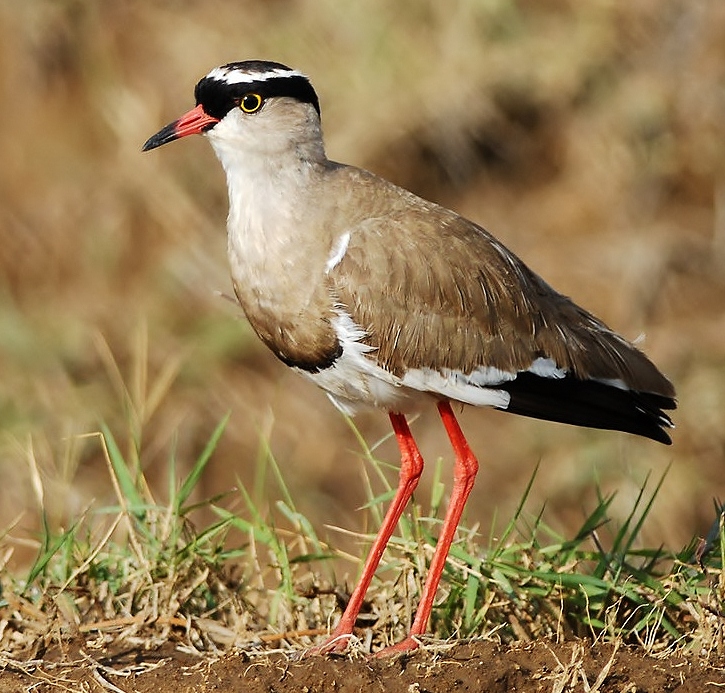Vanellus coronatus
 |
| Photo by Vincent Ceccarelli (Oiseaux) |
Common name:
crowned lapwing (en); abibe-coroado (pt); vanneau couronné (fr); avefría coronada (es); kronenkiebitz (de)
Taxonomy:
Order Charadriiformes
Family Charadriidae
Range:
This African species is found from the Red Sea coats of Somalia down to southern and south-western Africa.
Size:
This large plover is 30-31 cm long and weighs 120-200 g.
Habitat:
Crowned lapwings are found in dry grassland, open savanna, and cultivated lands, generally preferring areas where the grass is short and overgrazzed or has been burned. They are also found in man-made habitats, such as open fields, short pastures, airports, golf courses and roadsides.
Diet:
They search for prey on the ground, taking a wide variety of invertebrates including termites, ants, beetles, grasshoppers, spiders, millipedes and earthworms.
Breeding:
These birds are mostly monogamous, although polygamy is sometimes recorded. They can nest all year round, peaking in August-December. The nest is a scrape in the ground, lined with dried grass, roots, small stones and dried dung and typically placed on bare ground or among short vegetation, sometimes adjacent to a stone or mound of earth. There the female lays 2-4 eggs brown eggs with dark blotches. The eggs are mainly incubated by the female, although the male occasionally takes over if it gets particularly hot, and hatch after 28-32 days. The chicks leave the nest after about 4 hours, once their down is dry, and the adults take turns in caring for the chicks and directing them to food items. They fledge 29-31 days after hatching, but only become fully independent at the onset of the following breeding season, a year later.
Conservation:
IUCN status – LC (Least Concern)
This species has a very large breeding range and a global population of 420.000-1.100.000 individuals. The overall population trend is increasing, although some populations have unknown trends.







